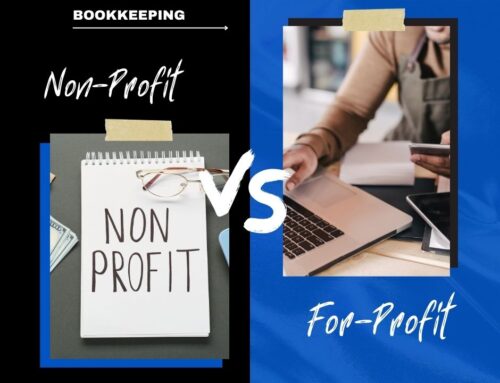You’ve got high sales numbers, but you’re still finding yourself short on cash. What’s the problem?
Shortening the time it takes for you to collect receivables could be an easy solution.
While getting paid in full, up front, or in advance would obviously be ideal, that’s not the case with most business models. Depending on the goods or services that you’re offering, it may require you to extend credit to your customers. This is inevitable.
I see so many businesses that are just happy to get paid that they don’t care when it happens.
But an outstanding invoice that’s going to be paid in a few months won’t help your cash flow problems that you’re dealing with today. That’s what inspired me to write this guide.
I’ll explain what you need to do to speed up the time it takes for you to collect your accounts receivables.
Increase Invoicing Frequency
When do you send invoices to your customers?
If you’re waiting until the end of the week or the end of the month, you’re just extending the time it takes for you to get paid.
Sure, it might be easier to manage just one invoice per month as opposed to four or five. But invoices should be generated and sent as soon as the goods or services have been delivered.
If you’re shipping a product to a client on August 3rd, don’t wait until September 1st to send an invoice. That customer might order another product on August 7th, but you can send a second invoice for that order when it happens.
For those of you who are doing projects at a large scale that take a long time to complete, you can take advantage of milestone invoicing principles.
Here’s an example. Let’s say you’re doing a construction project that takes six months to finish. Rather than waiting six months to send a bill, you can invoice your client at certain milestones along the way.
This can be based on specific periods of time, goals, or whenever you need to order more supplies. Just make sure these terms are agreed upon prior to the project being started.
Generate Transparent Invoices
Sometimes invoices aren’t paid simply because they are too vague or confusing. If you’re just sending an amount due without an invoice date, due date, invoice number, or payment terms, your customers may not know what to do.
For the most part, people don’t like to go out of their way to pay money. So, don’t leave them with questions like how they can pay or where checks should be mailed to.
Another way to convey transparency is by itemizing your invoices.
This is not a requirement for all businesses, but it can be helpful for some of you. By having a brief description of each charge, it shows the customer exactly what they’re being billed for, so they won’t have any doubts about the amount due or think that they’re being charged for a product or service that they didn’t receive.
Offer Flexible Payment Options
Not every customer will have the same preferred payment method. If you only accept checks or direct deposit, it may not be ideal for your clients.
Maybe they only write checks once per month and prefer to pay online or over the phone using a credit card.
By offering as many payment options as possible, it’s more likely that you can accommodate all your customers.
A client might be willing to pay as soon as they get the bill if your business accepts credit cards online. But if you’re forcing them to drive to your office and pay with cash, you can’t expect that to happen in a reasonable time frame.
I understand that adding different payment options will potentially cost you more money in transaction fees. But getting paid faster and improving your cash flow is well worth the marginal cost.
Define a Credit Approval Process
Don’t just blindly extend credit to anyone who wants to buy. Each individual customer should have certain credit limits based on your approval process.
Otherwise, a client can potentially end up with an outstanding balance that’s much higher than you’re comfortable with.
For those of you who have a sales team that gets rewarded for making sales, make sure someone else in your company handles the credit approval process for their clients.
If a customer has exceeded their credit limits or falls behind on payments, don’t be afraid to limit their credit moving forward or prevent them from buying more until the balance is settled.
Follow-Up with Unpaid Invoices
At first, it may feel awkward or uncomfortable. But you shouldn’t be afraid to ask for payment, especially when it’s overdue.
You can even follow-up with unpaid invoices before the due date to get paid faster.
For example, let’s say you’re shipping physical goods to a customer on credit. As soon as their order gets placed, an invoice gets automatically sent to them via email. Another copy of that bill could be sent to them through the mail, or when with the product when it gets delivered.
Then you can automatically send a payment reminder a week before the invoice is due.
After the due date has passed, you should be sending weekly reminders until the balance has been paid. This is part of establishing an effective invoicing process.
Don’t assume that your clients are intentionally avoiding payment. That’s typically not the case.
Sometimes an invoice could get lost in the shuffle or fall through the cracks. A friendly reminder will usually be enough to get paid on time.
Offer Payment Incentives
I know this varies for each business, but let’s say that by default, all your invoices are due within 30 days of the time they are issued.
But what happens if an invoice is paid in 4 days? Or what if it’s paid in 60 days?
If the amount of the bill doesn’t change for either of these scenarios, it doesn’t give your clients an incentive to pay faster or on time.
First, you could offer an early payment discount. For example, invoices paid within one week will automatically get a 2% discount. For late payers, you could impose late payment fees. Invoices that are paid after the due date will have additional costs.
These types of monetary incentives will not only encourage your customers to pay on time, but in some instances, they’ll have a reason to pay early.
Conclusion
Your business needs cash flow to survive. If sales aren’t the problem, then your collection process might need some improvement.
Days sales outstanding (DSO) is a crucial bookkeeping KPI that all businesses need to measure. It represents the average time it takes for your business to get paid.
In order to get that number as low as possible, you can implement the tips and tactics that I’ve outlined in this guide. For those of you who need additional help with your accounts receivable collections, consult with a professional bookkeeping service for alternative solutions.





